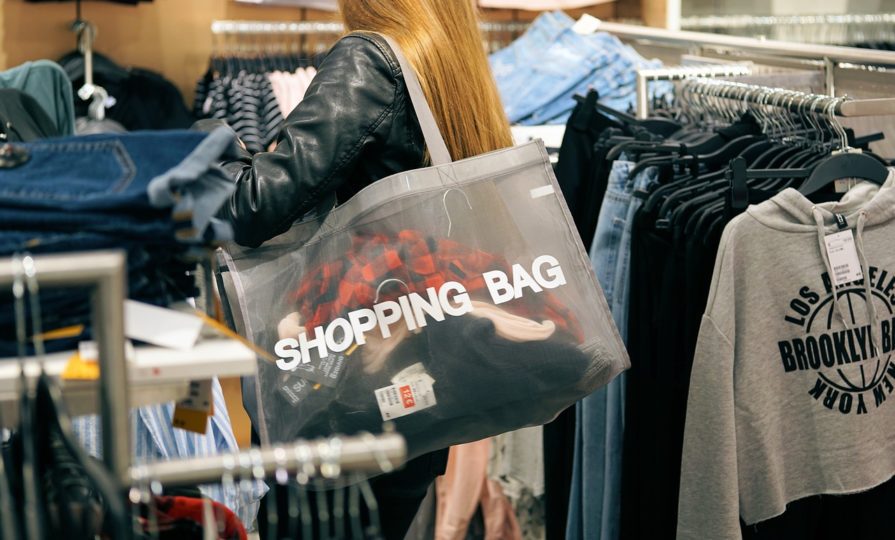Black Friday and Returns Tuesday: How should retailers prepare?
The Black Friday-Returns Tuesday cycle means balancing between attracting customers with compelling deals and managing the operational complexities that follow

As the retail sector gears up for the peak trading season, Black Friday remains a pivotal event, leading the way for a whirlwind of sales and consumer activity. Yet, the day also sets the stage for another less celebrated occasion: Returns Tuesday.
This phenomenon, occurring shortly after Black Friday, sees warehouses flooded with items returned by customers who regretted their purchases or found them unsuitable. For retailers, this dual-edged sword presents both opportunities and operational challenges.
Although Black Friday continues to dominate the retail calendar, consumer behaviour is evolving.
According to recent research commissioned by Advanced Supply Chain and ReBound Returns, nearly half (48%) of UK shoppers buying Christmas gifts remain unmoved by Black Friday or Cyber Monday promotions. This year, a significant 63% of deal hunters are waiting for discounts of at least 20%, and nearly 10% won’t commit to purchases until products hit half price.
Ben Balfour, managing director at Advanced Supply Chain, emphasised the enduring relevance of Black Friday despite changing attitudes.
“Black Friday is still important for retailers because around four-in-10 shoppers wait for money-off promotions before starting to buy Christmas gifts. It’s a chance for retailers to satisfy shopper expectations and win new customers who may shop again in 2025,” he notes.
However, rising living costs and economic uncertainty have dampened some enthusiasm. “Households are cautious about splashing out for Christmas. However, it’s possible this will ease as we get closer to the big day and people start getting in the festive spirit,” Balfour adds.
Returns Tuesday
While Black Friday brings sales spikes, Returns Tuesday delivers a wave of returned products. Following the first weekend after Black Friday, many customers package up items they regret buying or no longer want. This creates a significant challenge for retailers.
“Returns volumes increased by 145% after Black Friday and Cyber Monday in 2023,” shares Marko Kiers, chief commercial officer at ReBound Returns. Most of these products are likely to arrive back at warehouses on Tuesday 10 December—known as Returns Tuesday.
Retailers must act swiftly to inspect and process these returns. Delays can lead to lost sales opportunities as the Christmas countdown continues. “If these products are sitting in warehouses uninspected, they aren’t on sale. This means retailers are losing shopping days and revenue,” Balfour cautions.
Handling returns effectively starts with data. Accurate returns data can pinpoint why items are being sent back, enabling brands to address issues such as sizing inconsistencies, poor descriptions, or inadequate delivery methods.
“Having accurate insight about why items are being sent back can enable retailers and brands to take informed, corrective action,” Kiers explains. “By combining the digital returns data with thorough physical checks of returned items, retailers can provide refunds in a short timeframe, improving consumer satisfaction while safeguarding against returns fraud.”
Another key strategy for managing returns is implementing a grading system. “Having grading rates creates a framework for quality checking returned items and quickly deciding what needs to happen to a product to maximise its value and reduce margin dilution” Balfour adds.
“During testing, warehouse operatives can quickly pinpoint whether the condition of a returned product is grade A, B, C etc, and then process it accordingly. This avoids deliberation and prolonged quality checks, reducing bottlenecks during returns processing.”
The rise of social commerce
A growing number of consumers are turning to platforms like TikTok Shop for their holiday purchases. Advanced Supply Chain’s research found that 19% of UK shoppers plan to shop via TikTok this year. While these channels open new opportunities for engagement, they add logistical complexity.
“As more consumers start shopping on social media, such as on TikTok, it adds another layer of logistical complexity – inventory management, order fulfilment, and returns processing must be seamlessly integrated across all platforms,” Kiers highlights. This requires real-time supply chain visibility and robust systems to handle fluctuating demand.
With 29% of shoppers admitting to returning items influenced by heavy discounts, retailers must view returns as part of the broader customer journey. A smooth, transparent returns process can foster loyalty.
“It’s essential to strike a balance between reducing expenses and keeping consumers happy,” Kiers advises. “Most people expect a returns window of at least 30 days. Rather than reducing returns windows, retailers can extend them, only marginally affecting logistics but significantly boosting customer experience.”
Additionally, clear policies and easy-to-navigate return portals can make a significant difference. “92% of consumers say they would buy from a retailer again if the returns process is easy,” Kiers shares.
Ultimately for retailers, the Black Friday-Returns Tuesday cycle means balancing between attracting customers with compelling deals and managing the operational complexities that follow.
As Kiers concludes: “There’s still time for retailers to improve their returns set-up for this festive peak period. Firstly, they need to make sure their returns policy is clear and transparent, especially as more retailers extend return windows to cover Black Friday purchases for Christmas gifts.” Those who approach the peak period with a focus on customer satisfaction won’t just survive the festive rush—they’ll set the stage for success in the year ahead.











